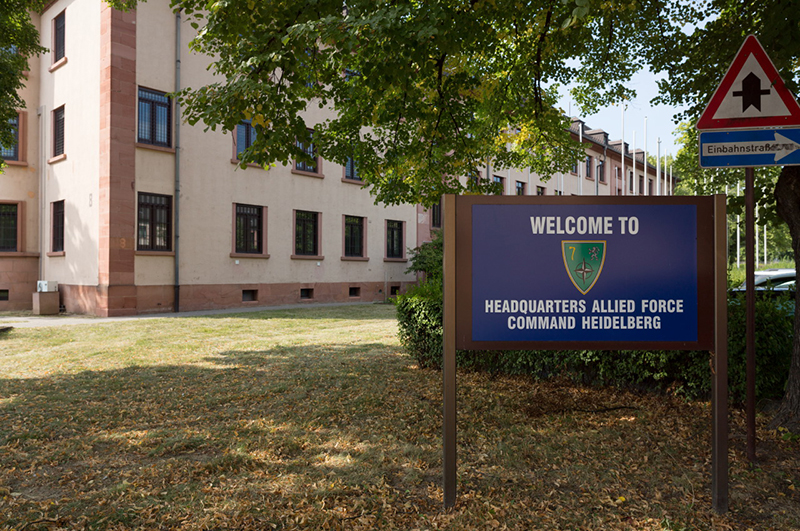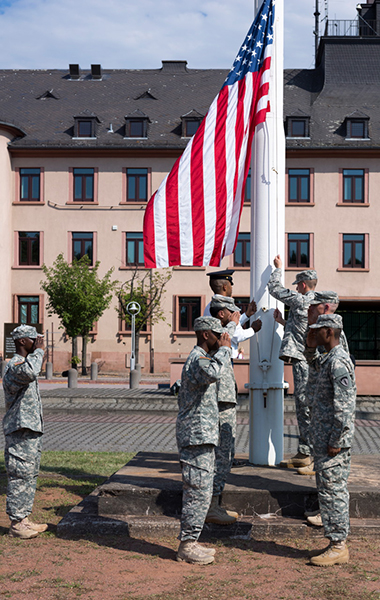The Keyes Building and German-American relations in Heidelberg
History

Encounters with Americans have fundamentally influenced Heidelberg’s past and present. Similarly, Heidelberg has had a place in the consciousness of many US citizens since the 18th century. These reciprocal links have undergone constant transformation and reflect the back and forth of transatlantic relations in myriad ways. The Keyes Building, as an authentic setting of this relationship, provides an opportunity to bring the past and present of this coexistence to life and explore the current challenges of transatlantic dialogue. At the height of the Cold War the most important institutions of the US Army and NATO were located in Heidelberg. Thus the base, known since 1948 as Campbell Barracks, evokes more intensely than virtually anywhere else in Germany the presence of over 15 million US citizens in Europe during the post-war period and the place of the Federal Republic of Germany in the western alliance. The shared history of the Americans and the people of Heidelberg provides a vivid picture of the transformation from wartime enemies to friends. At the same time, it also shows the contrasts that can shape a value-based friendship, especially in relation to issues of war and peace.
The Keyes Building on the Campbell Barracks site is a striking illustration of changing German-American relations. Built in 1937 during the remilitarization of Germany, the building initially served as the officer’s mess for the armed forces (Wehrmacht). The Nazi architects employed a range of design elements throughout the building for propaganda purposes as they sought to integrate the newly founded regiment into the traditions of German military history. One example is the remarkable stained glass window in the vestibule.

With the occupation of Heidelberg by US forces on March 30, 1945, the barracks became part of the headquarters first of the US 6th Army Group and, a short time later, the Seventh Army. Over time the American forces underwent several phases of restructuring and this was reflected in Heidelberg. After initial troop reductions, the realignment of American policy in Europe following the Soviet Blockade of Berlin in 1948/49 and the beginning of the Korean War in 1950 led to the increasing importance of Heidelberg. The building was renamed after former commander General Geoffrey Keyes in 1974 and became the headquarters of the US commander-in-chief and chief of staff. To this end it was extended in 1951 when a south wing was added. The former casino ballroom came to serve as a conference room.
From Heidelberg the US Army units stationed in Europe directed and administered their facilities and activities, and developed strategic deployment plans. It was only with the NATO missions in the Balkans during the 1990s that the Heidelberg headquarters became increasingly central to military operations. At this time a growing number of NATO nations had their own contingents in the city.
The realignment of US military strategy brought about a turning point for Heidelberg. In 2010 it was announced that Campbell Barracks would close, and the 68-year history of American armed forces in the city finally came to an end on September 6, 2013.

